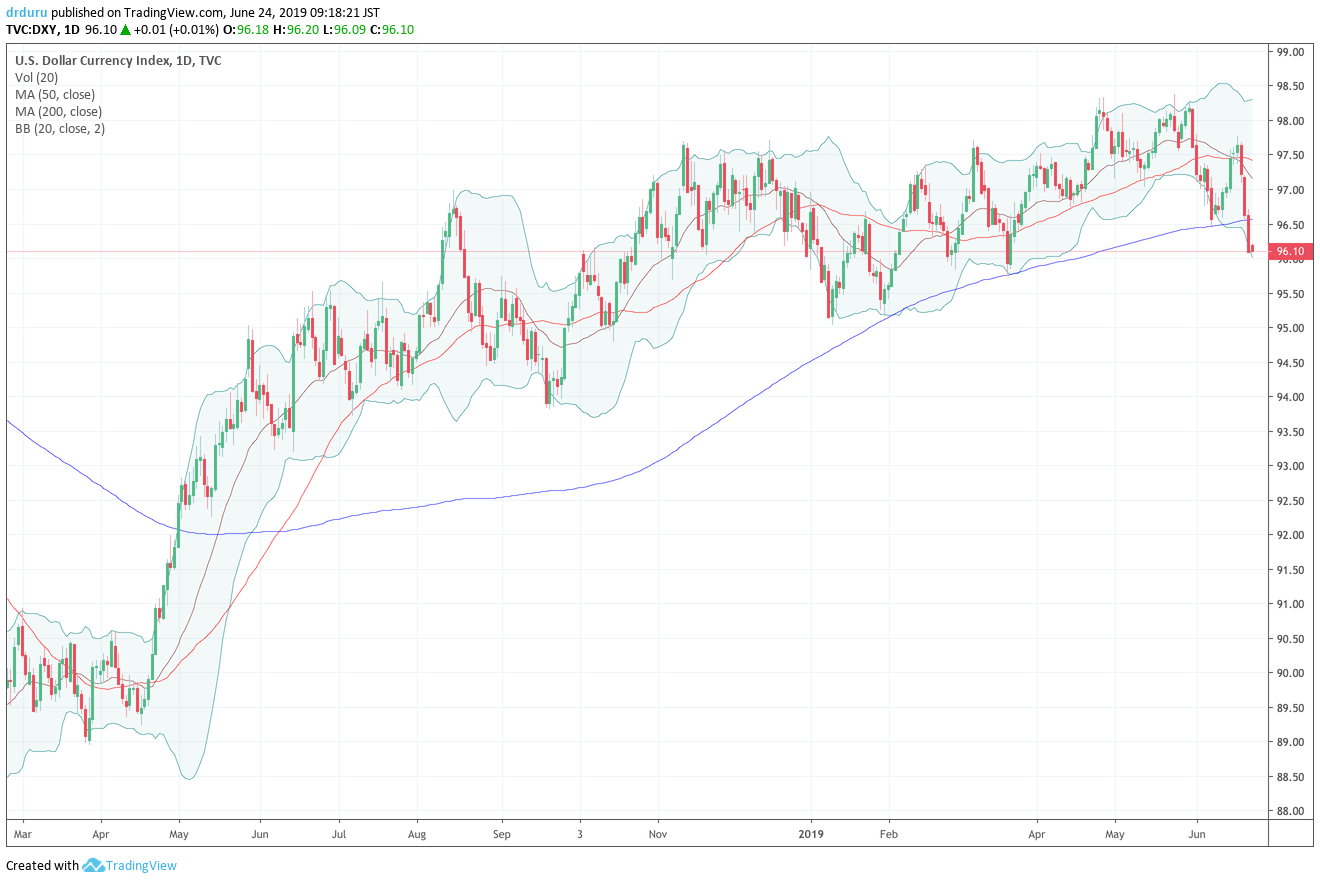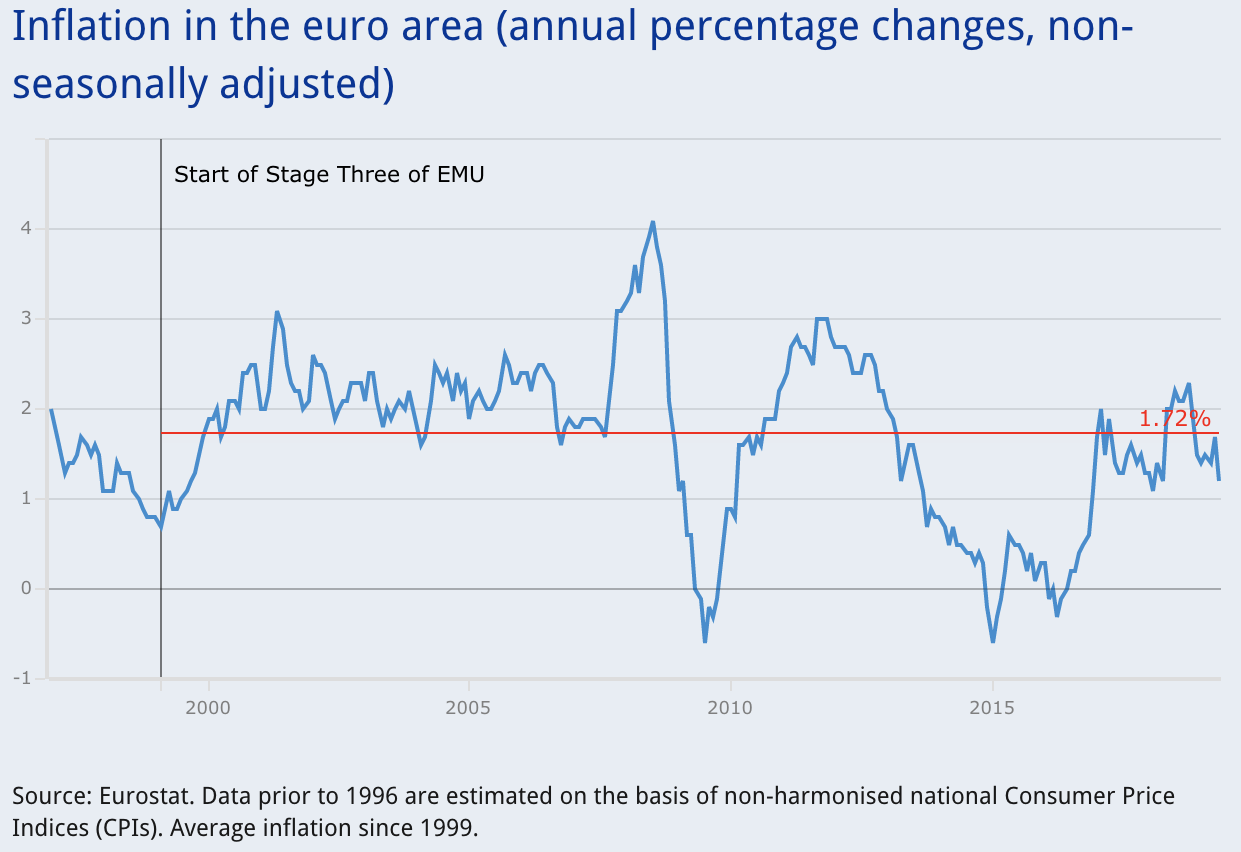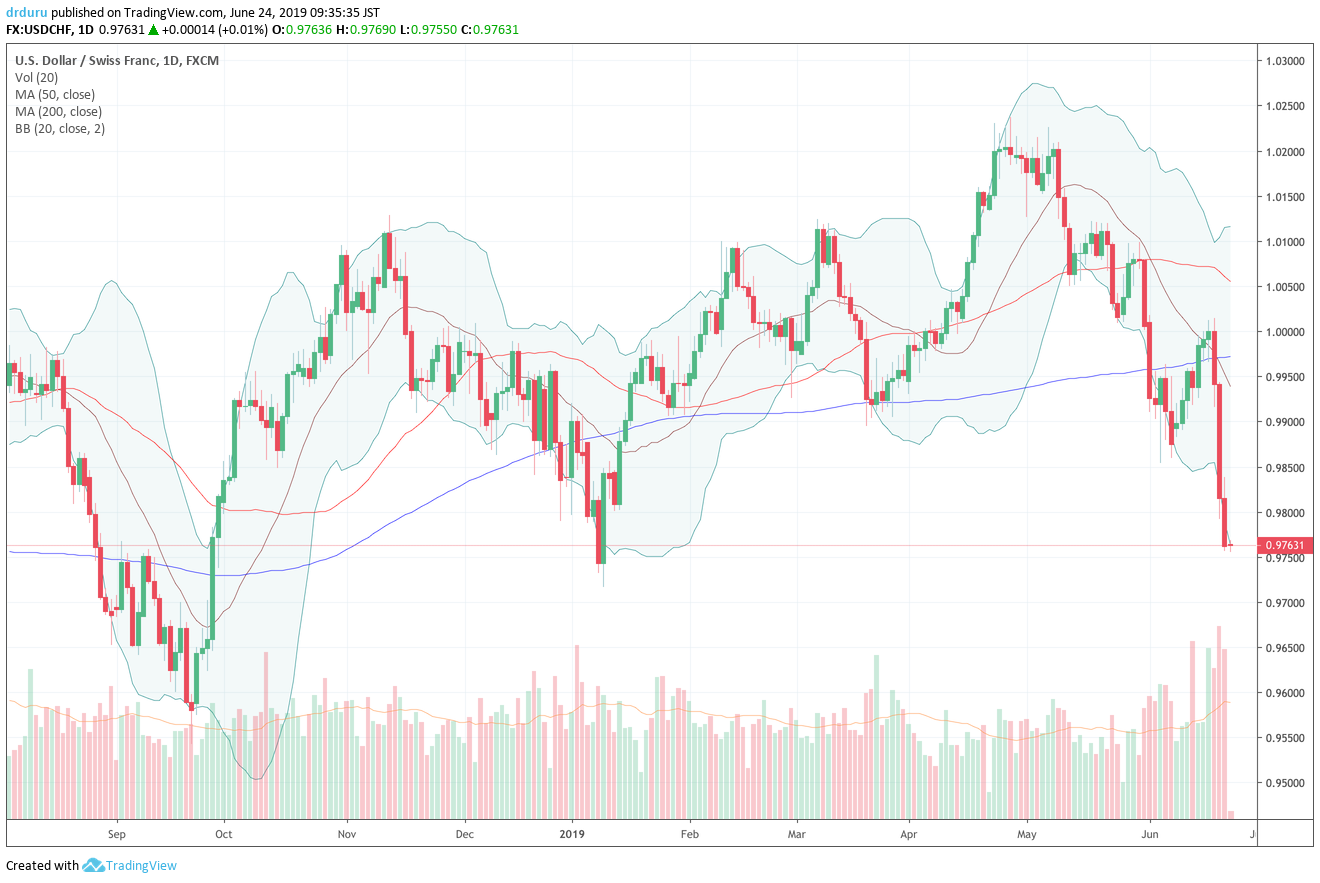It was one of those trades that works until it doesn’t.
Ever since the U.S. dollar index (DXY) broke out above its 200-day moving average (DMA) back in April, 2018, the index provided a lot of bullish swing trade opportunities. In the early stages of the rally, DXY pivoted around its 20DMA and then its 50DMA. The most reliable trades came this year as the U.S. dollar index tested 200DMA support several times. On Friday, the trade finally stopped working as DXY broke down below 200DMA support.

Source: TradingView.com
The breakdown, and the follow-through at the time of writing, caught me flat-footed as I positioned for yet another rebound. Even though the Federal Reserve is promising dollar-damaging easy money soon, the European Central Bank earlier in the week also promised to extend its dovish timeline in order to combat weak inflationary trends.
Looking forward, the risk outlook remains tilted to the downside, and indicators for the coming quarters point to lingering softness. The risks that have been prominent throughout the past year, in particular geopolitical factors, the rising threat of protectionism and vulnerabilities in emerging markets have not dissipated. The prolongation of risks has weighed on exports and in particular on manufacturing.
In the absence of improvement, such that the sustained return of inflation to our aim is threatened, additional stimulus will be required.“Twenty Years of the ECB’s monetary policy” Speech by Mario Draghi, President of the ECB, ECB Forum on Central Banking, Sintra, 18 June 2019
In our recent deliberations, the members of the Governing Council expressed their conviction in pursuing our aim of inflation close to 2% in a symmetric fashion. Just as our policy framework has evolved in the past to counter new challenges, so it can again. In the coming weeks, the Governing Council will deliberate how our instruments can be adapted commensurate to the severity of the risk to price stability.

Source: European Central Bank
As a result, I thought fading the euro (FXE) would once again work like a charm. I even loaded up against the Swiss franc (FXF) which is highly correlated to the euro. Both are rallying strongly against the U.S. dollar.

Source: TradingView.com
Crossing the 200DMA is always a big deal for the U.S. dollar index. Such moves tend to generate sustained changes in trend. Even if the dollar recovers quickly from this breakdown, the weakness is likely to resume based on recent history for the index. For now, I am staying patient to see whether the U.S. dollar gets a “safety” trade advantage over the euro during this week’s G20 drama or even the mounting tensions between the U.S. and Iran.
Be careful out there!
Full disclosure: net long the U.S. dollar
